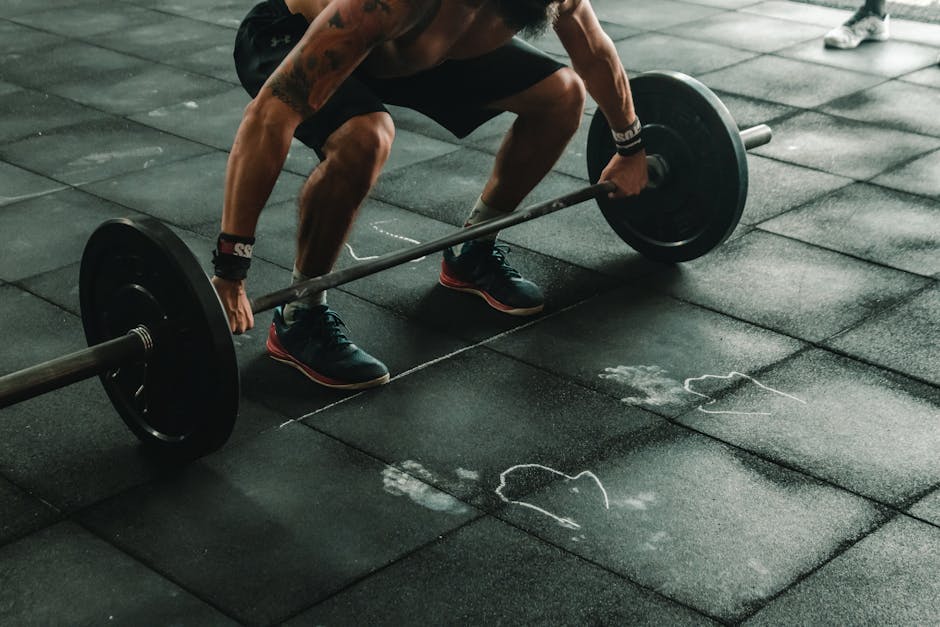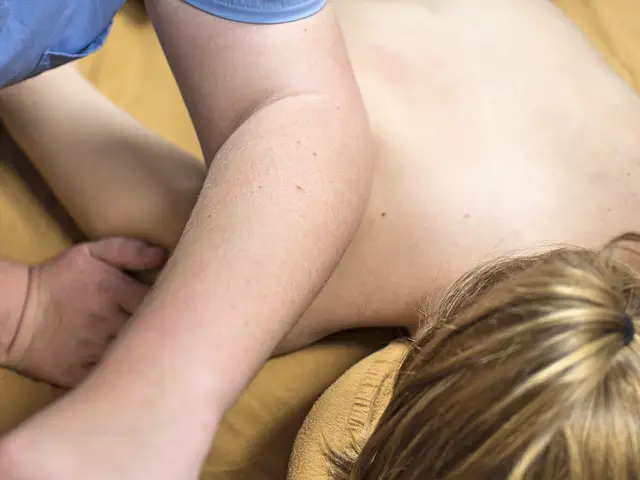Ladies and gentlemen, gather round all ye who have hit the gym with the intention of being the next Hulk or Wonder Woman. The weights may be heavy, but your drive is even heavier. However, if your elbows are feeling like they’ve been hit with a sledgehammer after a few lifting sessions, that drive can quickly come to a screeching halt. Fear not, my fellow gym rats! We will dive into an inside look at elbow pain during weightlifting and give you the lowdown on how to alleviate that agony. Let’s flex our knowledge muscles and tackle this dilemma together!
Contents
- 1 Understanding Elbow Pain During Weightlifting: An In-Depth Analysis
- 2 The Anatomy of the Elbow: What You Need to Know About Weightlifting
- 3 Common Causes of Elbow Pain Among Weightlifters
- 4 Preventing and Managing Elbow Pain During Weightlifting
- 5 The Importance of Seeking Professional Help for Persistent Elbow Pain
- 6 Lift on, friends!
Understanding Elbow Pain During Weightlifting: An In-Depth Analysis
Elbow pain is a common occurrence for people who engage in weightlifting. The pain can be so intense that it makes it difficult for one to continue with their workout regimen. Understanding the root cause of the pain is the first step in finding a solution. Let’s take an in-depth look at what causes elbow pain during weightlifting and how to minimize it.
First off, it’s important to understand that when we lift weights, we put a lot of stress on our elbows. This stress can cause small tears in the tendons and ligaments that attach to the joint, leading to inflammation and pain. To avoid this, it’s essential that we warm up before lifting weights. Start with some light cardio to get your blood flowing, then progress to stretching your arms and wrists.
Another common culprit of elbow pain while lifting is improper form. Make sure you’re not flaring your elbows out too much when doing bench presses or overhead tricep extensions. Keep your elbows close to your body and parallel to each other. Also, avoid locking your elbows when lifting weights; maintain a slight bend to prevent excessive pressure on the joint. By following proper form, you can minimize the risk of elbow pain and avoid interrupting your workout routine.
In conclusion, elbow pain is something that we need to be mindful of when weightlifting. With proper warming up, good form, and even the use of elbow sleeves, we can minimize the pain and enjoy lifting weights without any interruption. So, let’s lift those weights with caution and switch up our workouts to give our elbows a much-needed break!
The Anatomy of the Elbow: What You Need to Know About Weightlifting
The elbow is like a hinge that allows your forearms to bend and straighten. Not only is it an important joint for everyday activities like typing or giving someone a high five, but it’s also essential for weightlifting. If you’re a gym-goer, it’s time to dive deeper into the anatomy of the elbow and learn what you need to know for your next weightlifting session.
First things first, you need to understand the bone structure of the elbow. The humerus, radius, and ulna are the three bones that make up the elbow joint. Can you believe that those little bones can hold up the weight of a heavy barbell? That’s pretty impressive. And just like your biceps and triceps need to work in unison to get those gains, the humerus, radius, and ulna need to cooperate to support your weightlifting goals.
Now let’s talk about the muscles surrounding the elbow. The biceps and triceps are what we often focus on when we think of arm muscles, but there are also several smaller muscles that help stabilize the elbow joint during weightlifting. These include the brachialis, pronator teres, and anconeus. Don’t forget to give these muscles some love during your workouts to prevent any elbow strain or injury.
In conclusion, whether you’re new to weightlifting or a seasoned pro, the anatomy of the elbow is crucial knowledge for success in the gym. From the bones to the muscles, it all works together to support your lifting goals. So next time you’re pumping iron, remember to give your elbow some appreciation for doing its part. And who knows, maybe your elbow will even give you a high five back.
Common Causes of Elbow Pain Among Weightlifters
Now, I don’t want to point fingers, but we all know weightlifters are not the most careful bunch. And when it comes to elbow pain, let’s just say they have their fair share of causes. Here are some of the most common ones:
First on the list is the infamous “curls for the girls” exercise. Yes, I know, it’s all about getting those bulging biceps, but did you know that those curls can also cause elbow pain? It’s all about the technique, brother! If you’re not paying attention to your form and keep swinging the weights around, your forearm muscles can start pulling on your elbow joint. Ouch!
Then there’s the obsession with heavy lifting. Look, I get it, you want to prove yourself and show the world how much you can lift. But do you really need to go for the heaviest weight on every single exercise? Your elbows say no! When you overload your joints, you’re putting unnecessary stress on them, and that can lead to inflammation and pain. Take it easy, champ, Rome wasn’t built in a day.
Last but not least, let’s not forget about the infamous “gym bro syndrome”. You know the type: the guys who hog all the equipment, grunt loudly, and have no regard for anyone else’s personal space. Well, those guys can also cause elbow pain, indirectly. How, you ask? By spreading their germs, of course! If you’re not wiping down the equipment after you use it, you’re not only being a gross human being, but you’re also exposing yourself and others to all sorts of nasty bacteria and viruses. And guess what? Some of those can cause joint pain. So do everyone a favor and grab a towel.
Preventing and Managing Elbow Pain During Weightlifting
Are you tired of having an aching elbow after every weightlifting session? Well, fear not my friend! Here are some tips to help prevent and manage elbow pain during your workouts.
1. Warm-up before lifting
This may seem like a no-brainer, but you’d be surprised how many people skip their warm-up routine. Take a few minutes to properly stretch out your arms and shoulders. You could also try using a resistance band to warm up your elbows and forearms. Trust me, your elbows will thank you for it!
2. Use proper technique
One of the biggest mistakes people make is using improper form during weightlifting. This puts unnecessary pressure on your joints and can lead to injury. Invest in a session or two with a personal trainer to ensure you have the right technique. Alternatively, check out some YouTube videos for some helpful tips.
3. Don’t overdo it
We get it, you want those gains ASAP. But, overdoing it and lifting too much weight can cause serious harm to your body. Take it slow and steady. Listen to your body and give it enough rest between workouts. Remember, Rome wasn’t built in a day and neither will your muscles.
In summary, make sure you warm up before weightlifting, use proper technique, and don’t overdo it. Follow these tips and say goodbye to elbow pain. And if all else fails, just put some ice on it and hit the couch with a Netflix binge. Happy lifting!
The Importance of Seeking Professional Help for Persistent Elbow Pain
When your elbow feels like it’s being attacked by a swarm of bees every time you reach for the remote, it’s time to seek professional help. Here’s why:
1. You could have tennis elbow. Or as I like to call it: “I-played-too-much-fetch-with-my-dog” elbow. And while it may sound like a sporty and impressive injury, it’s actually a painful condition caused by overuse of the tendons in your forearm. But fear not! A professional can help treat your tennis elbow and get you back to your dog-fetching duties.
2. You could have golfer’s elbow. Or as I like to call it: “I-was-trying-to-act-like-a-fancy-person-at-the-range” elbow. This one also involves tendon overuse, but affects the inside of the elbow instead. And no, you don’t have to be a golfer to get it. Anyone who repeatedly uses their forearm muscles can develop golfer’s elbow. But with professional help, you can get your elbow back to par. (Get it? Golf puns!)
3. You could have something more serious going on, like a fracture or nerve damage. And let’s be real, no amount of ice packs and ibuprofen is going to fix those. But a professional can diagnose and treat these issues before they escalate into something even more painful and debilitating. So don’t tough it out like a hero. Seek help like a smart and sensible human being.
Lift on, friends!
Well, there you have it! Now you know all about elbow pain during weightlifting. Whether you’re a seasoned pro or a newbie just starting out, it’s important to keep your elbows in tip-top shape so you can continue to lift heavy and smash your fitness goals.
So, the next time you feel a twinge in your elbow, don’t panic – just remember these tips and tricks to keep yourself pain-free.
And if you do end up with a sore elbow, don’t be afraid to take a break and let it heal. After all, it’s better to rest and come back stronger than to push through the pain and end up sidelined.
So go forth, my fellow fitness enthusiasts, and keep lifting with confidence – just be sure to take care of those elbows!








Leave A Comment